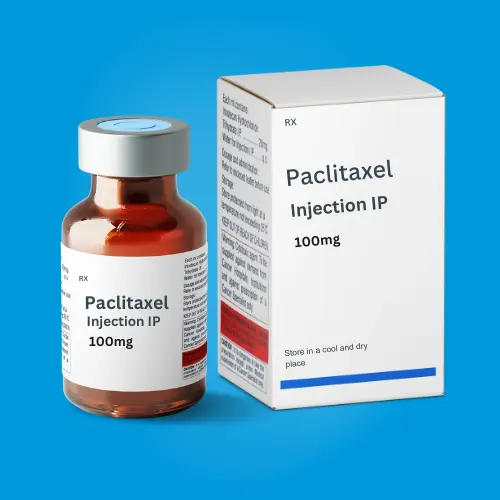Dosage & Side Effects
Although there are a few other ways to administer paclitaxel, the most recommended method is to drip it into the vein (intravenously) in the hand or arm. This depends on your preferences and other considerations, such as how easy it is for chemotherapy personnel to identify the appropriate veins. It can be administered monthly at smaller doses throughout an hour, or once every 21 days over a period of three hours (referred to as the accelerated or dosage dense). The amount of time that passes between each treatment cycle will allow your body to heal appropriately and may differ based on whether the usual range of blood cell counts has been reached.
Anemia (low red blood cell count), weakness, exhaustion, hair loss, numbness, tingling, or burning in the hands or feet, joint and muscle pain, difficulty breathing, difficulty swallowing, hives (raised bumps), rash, diarrhea, mouth or lip sores (mucositis), infections, nausea, edema, vomiting, bleeding episodes, injection site irritation, and low blood pressure (hypotension) are among the most common adverse reactions.
FAQ's
What conditions is Paclitaxel used to treat?
Paclitaxel, containing Paclitaxel, is prescribed for various cancer types, including primary breast cancer, metastatic breast cancer, ovarian cancer, lung cancer, and Kaposi’s sarcoma.
How is Paclitaxel administered?
Typically, Paclitaxel is given intravenously, either as a monthly infusion over an hour or once every 21 days for three hours (referred to as accelerated or dose-dense treatment). The intervals between treatment cycles depend on the patient’s recovery of blood cell counts.
What are the common side effects of Paclitaxel vial?
Common side effects include anemia, weakness, hair loss, neuropathy (numbness, tingling, or burning in hands/feet), joint/muscle pain, breathing difficulties, hives, rash, diarrhea, mouth sores, infections, nausea, vomiting, bleeding, injection site irritation, and low blood pressure.
What precautions should be taken before using Paclitaxel?
Patients allergic to any components of the drug or Cremophor, those with low white blood cell counts, or those receiving certain chemotherapy or anti-cancer medications need to avoid Paclitaxel. Pregnant or breastfeeding individuals should discuss its use with their doctor.
Are there any interactions or specific monitoring requirements while taking Paclitaxel?
Caution is necessary when taking Paclitaxel with certain medications like CYP2C8 substrates, inhibitors, or inducers. Patients need periodic blood cell count checks to monitor for myelotoxicity, especially when receiving the dosage.






